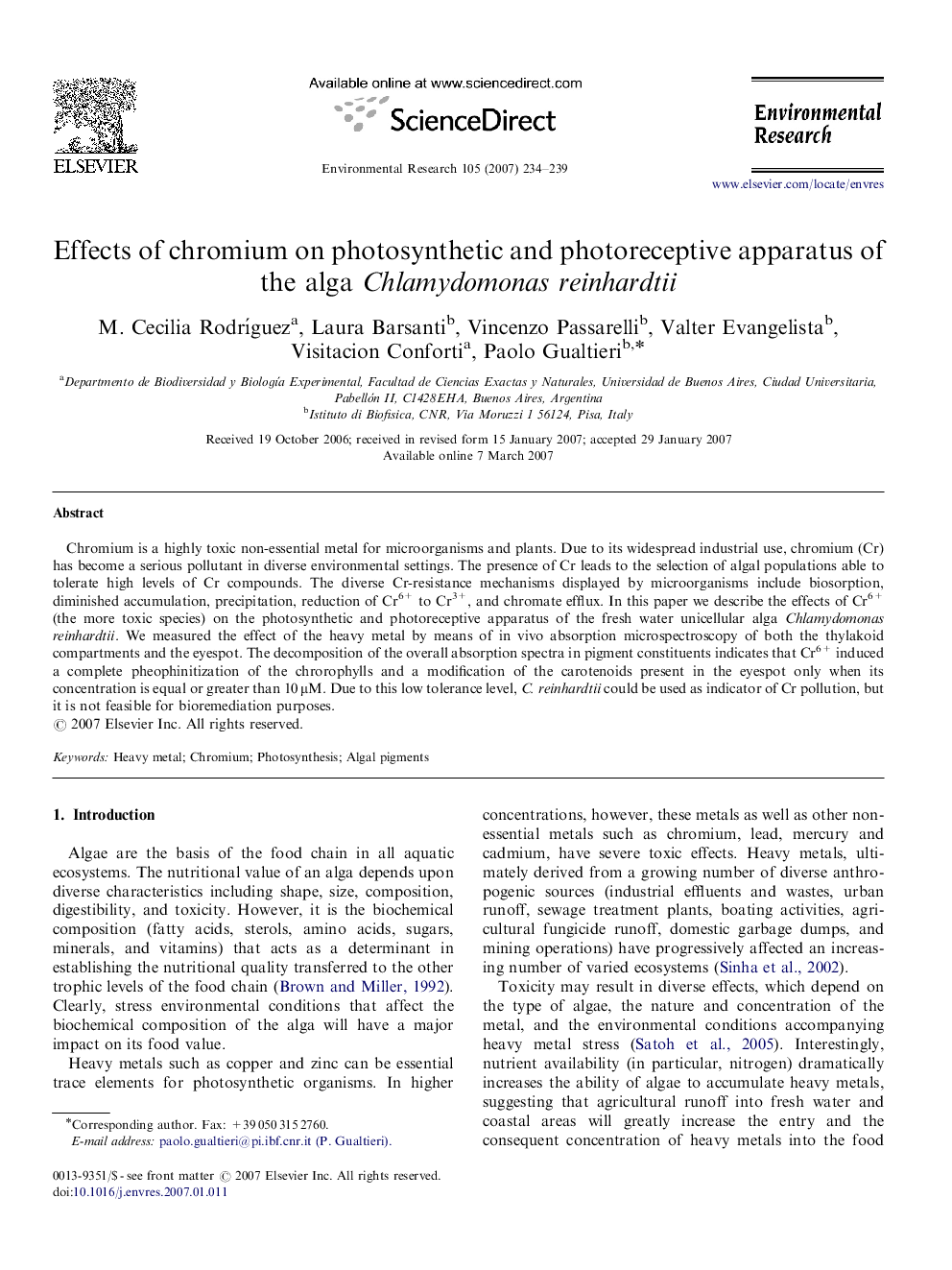| Article ID | Journal | Published Year | Pages | File Type |
|---|---|---|---|---|
| 4470465 | Environmental Research | 2007 | 6 Pages |
Chromium is a highly toxic non-essential metal for microorganisms and plants. Due to its widespread industrial use, chromium (Cr) has become a serious pollutant in diverse environmental settings. The presence of Cr leads to the selection of algal populations able to tolerate high levels of Cr compounds. The diverse Cr-resistance mechanisms displayed by microorganisms include biosorption, diminished accumulation, precipitation, reduction of Cr6+ to Cr3+, and chromate efflux. In this paper we describe the effects of Cr6+ (the more toxic species) on the photosynthetic and photoreceptive apparatus of the fresh water unicellular alga Chlamydomonas reinhardtii. We measured the effect of the heavy metal by means of in vivo absorption microspectroscopy of both the thylakoid compartments and the eyespot. The decomposition of the overall absorption spectra in pigment constituents indicates that Cr6+ induced a complete pheophinitization of the chrorophylls and a modification of the carotenoids present in the eyespot only when its concentration is equal or greater than 10 μM. Due to this low tolerance level, C. reinhardtii could be used as indicator of Cr pollution, but it is not feasible for bioremediation purposes.
